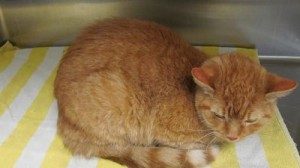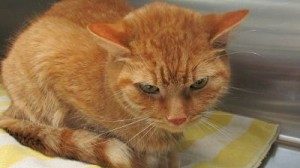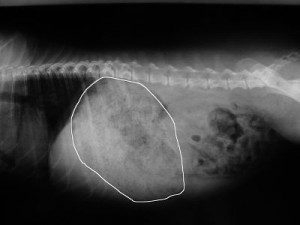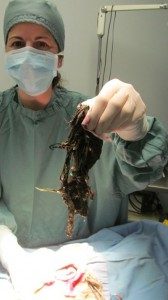Would you have missed these signs of pain?
Just a few weeks ago, we saw a kitty with all the classic symptoms of pain. We thought this is a wonderful teaching opportunity. We want all cat owners to recognize these symptoms. After you read this article, please spread the word and pass this on to all your friends.
One Saturday morning, we saw Buster (not his real name to protect his privacy). Buster is a 4-year-old indoor cat. Buster’s owner noted that the food dish was not being touched for 3 days and he did the right thing: He didn’t wait any longer.
Many times when cats don’t eat well, as veterinarians in Markham will confirm, owners assume that their cat doesn’t like the particular type of food any more and get some new brand or flavour. Although a different diet may stimulate the cat to eat some of the new food, the problem isn’t boredom with the old food. It is almost always a medical problem.
When we examined Buster he gave away clearly that he is in a lot of pain. Can you see the critical signs?

Here is a picture of the body position of a sick cat. It clearly gives away that Buster is painful. He is coiled up and not moving, his back is hunched, and his face is staring.
When you see your cat at home sitting like this, don’t ignore it. Look more carefully at his face:

Facial expression of a painful cat: The eyes are part closed, they gaze straight without interest in the environment, the eyes are pulled to the side giving a bit of an “oriental” expression, and the ears are half turned back. All these signs indicate pain.
The following is probably the most overlooked and most significant sign when a cat is not feeling well.

Unkempt hair in a painful cat. It is sticking up and there is loose hair. This kitty has not been well for three days and he didn’t groom himself.
All cats who neglect their personal hygiene have a problem.
An experienced veterinarian notices all these signs within a second. Please pay good attention to them at home too.
Dr. Goldman examined Buster carefully and felt a firm area in the abdomen. (Most people who see us examine a pet think we are petting the stomach, when we are really trying to find anything abnormal by feeling through the internal organs.)
Something firm in the stomach could mean a lot of different things, but it is not normal and justifies to look further. We did an x-ray:

X-ray showing a very enlarged stomach (circled by the white line) filled with irregular shadowing material. Is it food? Hairballs? Tumor? Toy?
Many people expect we see everything clearly on x-rays and believe we should have a concrete answer. As you can see, there is often only a suspicion that compels you to do the next step.
At this stage we had enough information to make a good next decision.
To recap, we have the following signs:
1. Painful cat
2. 3 days not eating
3. Firm Stomach
4. xrays show it full with something
Given this list of medical findings we determined that we have enough information to perform an exploratory abdominal operation and look directly. And it was the right decision.
Late on Saturday afternoon, Dr. Goldman removed a huge clump of different gift ribbons from the stomach.

Dr. Goldman holding the clump of gift ribbons she just removed.
Buster is long recovered and feeling very well again. We are happy that we could save a life.
PS: Why would cats eat gift ribbons? Well, we asked Buster but he wouldn’t tell us.
Sincerely,
Dr. Ernst Marsig, veterinarian in Markham
Practicing Veterinary Medicine in Markham for a Long and Happy Life of ALL Your Pets.
Animal Hospital of Unionville, a veterinary clinic on the north side of Hwy 7, serving all pets in Markham, Richmond Hill, Scarborough, Stouffville, and North York since 1966. We are your family vets for dogs, cats, pocket pets (rabbits, chinchillas, gerbils, mice, rats, hamsters, guinea pigs, skinny pigs, etc.), ferrets, and birds (budgies, cockatiel, parrots, amazon, cockatoo, love birds, conures, African greys, finches, canaries, etc.).
Disclaimer: No part of this website constitutes medical advice. Readers are advised to consult with their veterinarian.

